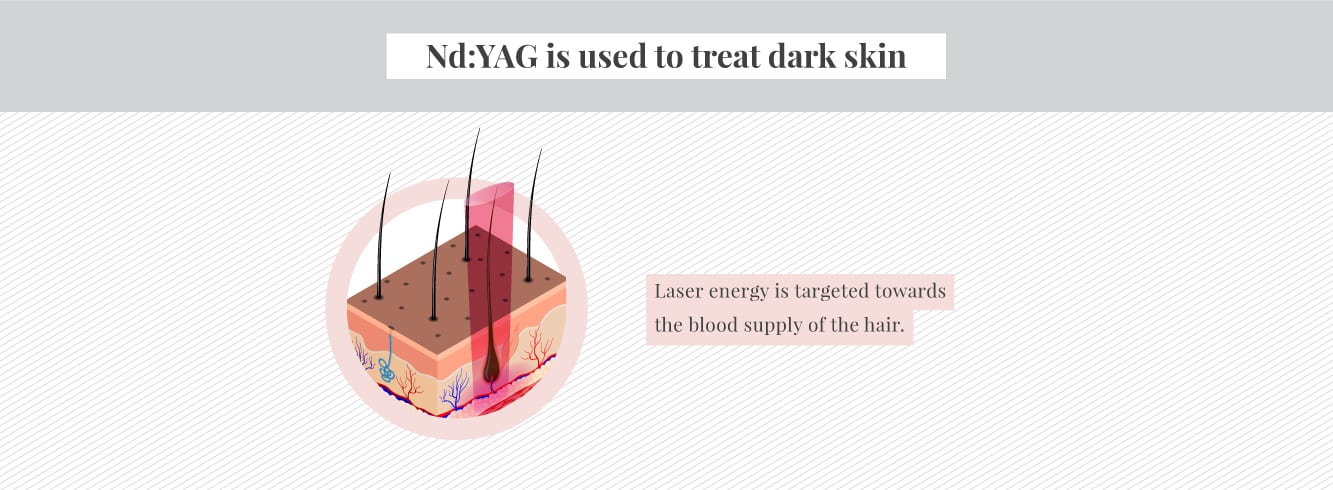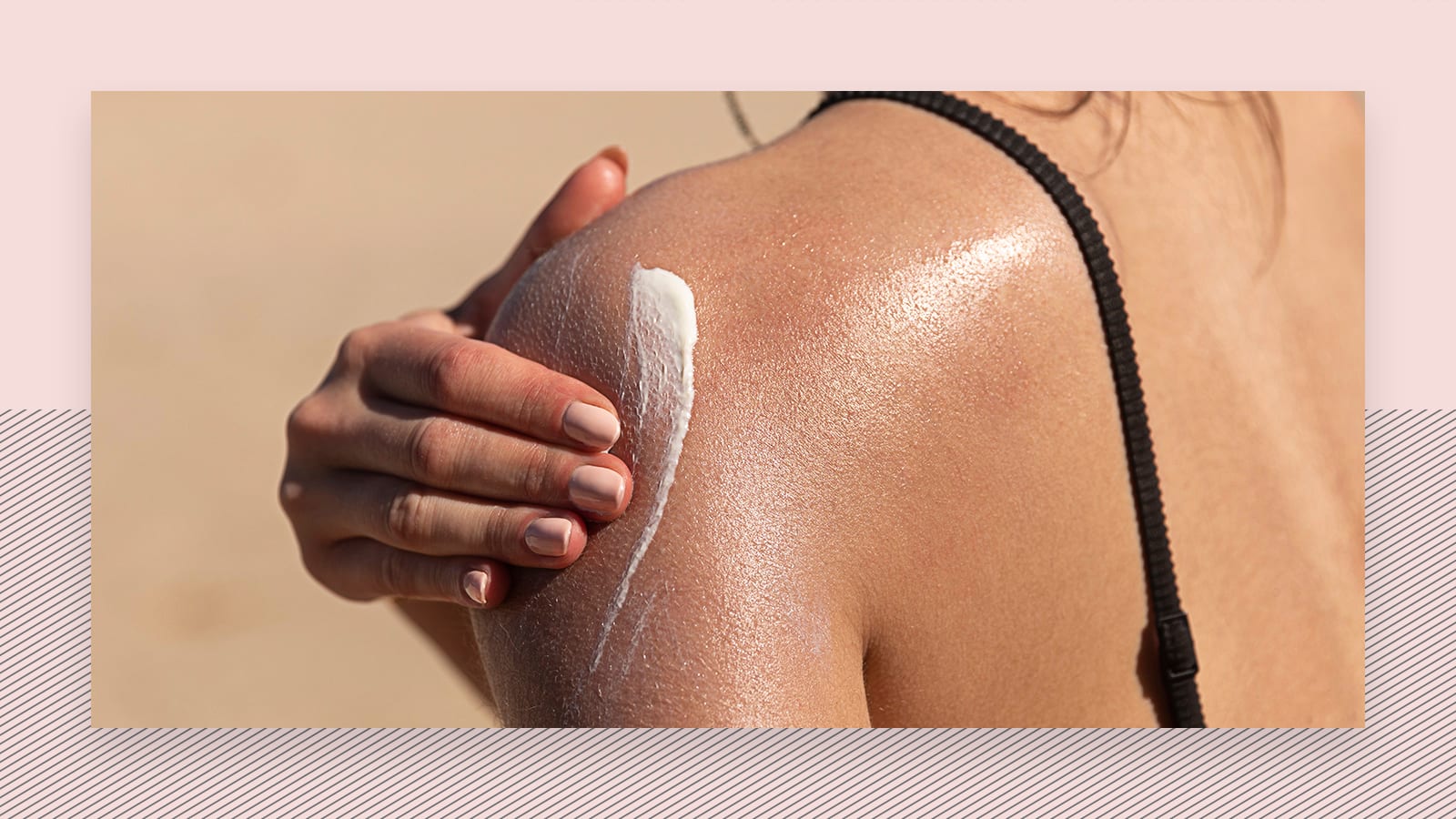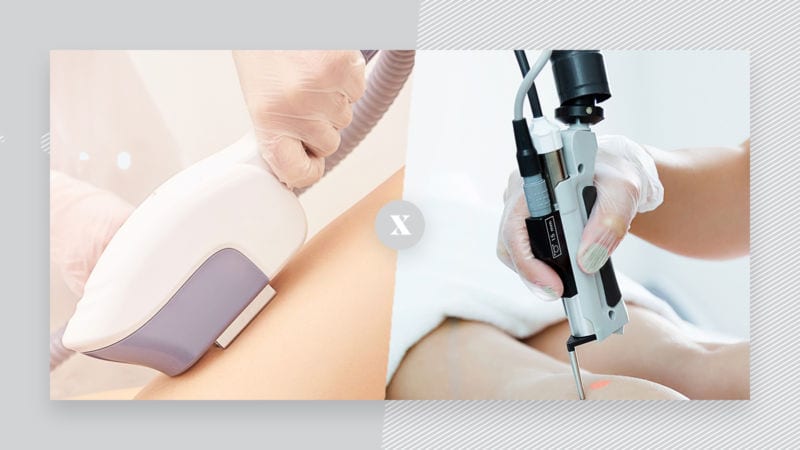Why can laser hair removal be dangerous when you have tan?
Laser hair removal can dangerous when you have a tan because pigmentation may occur. If a person is undergoing a course of laser and has exposed their treatment area to sun it is vital their settings be adjusted. At the start of a course of treatment skin in the treatment area is assessed. A safe setting is selected on the laser for this specific skin type. On subsequent sessions settings are increased in line with how the hair and skin responds. If after one of these sessions the area is exposed to sun and the skin colour changes so must the settings on the laser. After sun exposure the skin must be allowed to rest before doing another patch test or treatment. In most instances, a period of 6-8 weeks is sufficient enough depending on skin type.
This wait time will depend on the depth of tan present on the skin in the treatment area. Care must be taken after exposure and another patch test must be performed for safety reasons.
How laser hair removal works?
Laser works differently for pale/medium and darker skin types. In general very pale skin types don’t usually develop a tan. Medium-toned skin types tend to tan very well if exposed to sun. Because darker skin tones already contain an abundance of melanin these may change slightly after sun exposure. We use different lasers to treat pale/medium skin tones and darker skin tones. The lasers we use for Pale/medium skin tones would never be used on darker skin tones because the delivery of energy from this laser is too intense.
For darker skin types 4-6 an Nd:Yag is used and for pale/medium skin 1-3 an Alexandrite laser is used. Both of these lasers deliver heat into the follicle in different ways to target hair while keeping the surrounding skin safe.

How laser works for pale/medium skin types
Alexandrite laser works by targeting melanin/pigment contained within the hair. This laser uses pulses of light which is converted to heat in the follicle. This heat travels down to the base of the hair and heats up the interconnecting cells that connect the blood supply to the hair root. If these cells are damaged a new hair can’t form. This is a completely safe procedure and the surrounding skin and tissue will not be harmed. Laser relies on a contrast in the colour of the hair and skin to do this effectively. This is the reason why laser only works on brown and black hairs. Hairs that are lighter in colour and contain little to no pigment will not absorb this heat from the laser. So red, blond, grey or white hairs will not respond to laser treatment.
When your initial patch test is done a setting is selected to allow enough energy to target the hair without disturbing the skin. The setting selected on the laser based on your skin colour at the time. When skin is free from tan the laser will target the majority of the energy it delivers into the skin to the hair follicle. Very little will be absorbed into the surrounding skin.

Settings will need to be adjusted if your skin is tanned
If the skin has developed a tan and now contains more active pigment there is a high chance the skin may react if settings are not adjusted according to this new skin tone colour. When the laser is pulsing over the skin it will absorb into both skin and hair in the same way. If the setting on the laser has not been adjusted too much heat may be attracted to the skin resulting in a reaction. The laser is designed to absorb into anything that includes pigment and cannot distinguish between hair colour and skin colour. This is the reason why we need to treat with extremely caution. Alexandrite laser is so focused at absorbing into pigment that if the wrong setting is applied to the skin a reaction may occur. Most of these reactions are temporary and the skin generally returns to normal quite soon after.
However if a patch test has not been done and the skin assessed after sun exposure their is a high risk that a reaction could be worse. We will never take risks with you skin and will always insist on a patch test after any periods of sun exposure.
How laser works for darker skin types
It is important to note that a different method of laser is used to treat dark skin. Because Alexandrite laser is so effective at absorbing into melanin it is not suitable for darker skin types. The delivery of this heat is too aggressive for darker skin types to tolerate. An Nd:Yag is used for dark skin. This method is safe and effective and the delivery of heat into the skin is much more gentle. An Nd:Yag works by targeting the blood supply to the hair. The Yag will penetrate slightly deeper into the skin to target this blood supply. Unlike the Alexandrite the Nd:Yag has poor absorption into melanin so the surrounding skin will remain unaffected.
If skin happened to be exposed during a course of treatment we would always recommend a patch test for safety reasons. All skin types have the potential to react after sun exposure so it is essential your skin is tested before undergoing any further treatments. There is a difference between skin that is naturally dark and one that has developed a tan. The difference is the fluctuation in skin colour over time. It’s this fluctuation that can make treatment more difficult.

How can sun exposure affect your laser hair removal course?
Sun exposure can slightly prolong your course of laser hair removal. Everyone’s skin will react differently to laser. Some will be more sensitive than others while some may absorb more heat than others. At the start of a course, settings will be generally lower. The reason for this is hairs are thicker so will need less energy. After each session, these will be increased accordingly as hairs will be finer. Therefore the more sessions you have had in your treatment course the more risk there is after sun exposure. This is due to settings being increased after each session that you have. If after session 5 you were to develop a tan settings will have to be reduced back to compensate for this. When you have progressed into your treatment course settings will be at the higher end so it is essential settings be monitored closely.
Results may slow temporarily if you develop a tan during a course of treatment. Settings may have to be lowered until such time as your tan fades. When your skin is ready settings can begin to increase again. If you develop a very deep tan you may need to wait an extended period of time. This may mean you will need more sessions in the long term. Laser hair removal can be very dangerous on tanned skin. If you have exposed your treatment area to the sun it is important to book another patch test.
What if you don’t expose your treatment area at all?
If you do not tan your treatment area during your course you don’t need to worry. Settings can be increased safely for the duration of your course. A consultation and patch test is the first step you need to take to become hair-free. We assess your skin and hair to make sure you are suitable. Laser takes time, it can’t be rushed. Set timeframes are needed in order to get good results. If you are starting a course we can adjust your treatment plan if you are going on holiday. More sessions may be required in the long term but you will still see results. It’s important to know why laser hair removal can be dangerous when you have a tan to avoid any adverse reactions.
Contact us today to book your consultation and patch test. Our dedicated hair removal specialists in Dublin and Drogheda will answer any questions you may have. Your consultation and patch test is the first step you need to take before you start. If you would like to start a course of laser and have holidays booked our team can put in place a plan for you. They can give you advise on what to do before, during and after your holiday.



